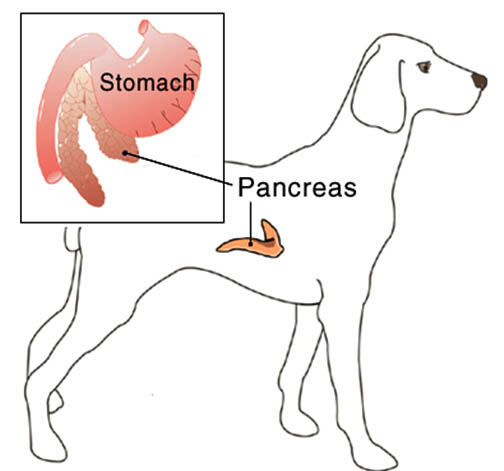As your dog gets older, it’s important talking to your veterinarian about doing routine blood work to make sure your dog is healthy. Just like in humans, diabetes in dogs can cause a variety of unpleasant symptoms. The sooner you know the clinical symptoms, the better for your dog’s health. If your dog is diagnosed with diabetes, you’ll have to keep your dog’s blood sugar at a ‘normal’ level at all times. Your vet will prescribe an ongoing treatment plan for your dog. Usually, ongoing treatment involves:
Monitoring Glucose Levels: Your veterinarian may ask you to check your pet’s urine glucose through blood and urine test, immediately following diagnosis.
Blood Test: This can be done in 2 ways and your veterinarian will discuss the best option with you.
- Blood test strips similar to those used for testing urine can be used.
- A handheld gluco-meter can be used. Although not essential, handheld glucometers are worth the investment and are also easy to use.
Urine Test: This test checks your dog’s urine for the signs of glucose and ketones. This is not as precise as measuring glucose in the blood, but it can be done easily at home.
- Early in the morning, well before the time of the injection and the first meal.
- At the end of the afternoon, before the second meal.
- Early at night.
Controlling Diet: Normally, once a dog is diagnosed with diabetes they usually remain diabetic. Although there are nutritional and dietary approaches that can help keep their glucose levels stable and well-controlled, they will also require lifelong insulin injections. An excellent diet option for a diabetic dog is a meat-based high protein food that is moderately fat and carbohydrate-restricted. Ideally, at least 30 to 40 percent of the calories in your diabetic dog’s food would come from protein, and less than 30 percent of the calories would come from fat and carbohydrates. Further dietary restriction may be necessary if your diabetic dog has blood fat elevations or pancreatitis.
Regular insulin shots: If your dog has been diagnosed with canine diabetes, your vet may have prescribed insulin injections. Insulin is a hormone that helps to regulate the blood sugar or glucose levels of the body. Dogs with diabetes can only control their blood sugar with insulin injections, so you’ll have to learn how to give your dog a shot of insulin. Once you master these steps, the process will become a quick part of your— and your dogs — routine.
Consistent Exercise: Exercise is just as important for diabetic dogs as it is for non-diabetic dogs. Exercise uses energy and helps to prevent hyper-glycaemia. In addition, increased blood flow produced by exercise may improve the absorption of insulin by further reducing the blood glucose concentration. Your diabetic dog’s activity level should remain unchanged and steady. It is best to create a consistent exercise routine for your diabetic dog to avoid sudden changes in energy (glucose) requirements. And if you are concerned about the amount of exercise your diabetic dog needs, then please ask your veterinarian.
Regular Veterinary Checkups: Diabetic dogs will need regular check-ups to monitor their condition, usually every six months after the regulation has been achieved. And you should always let your vet know immediately if you notice any changes in your dog or if the symptoms of diabetes seem to return.
Having a diabetic pet is a big commitment for pet owners. So, if your furry companion is diagnosed with diabetes, make sure to monitor your dog carefully for the signs of diabetes, and seek veterinary attention sooner rather than later to help test for this ever-growing problem!


Leave a Reply